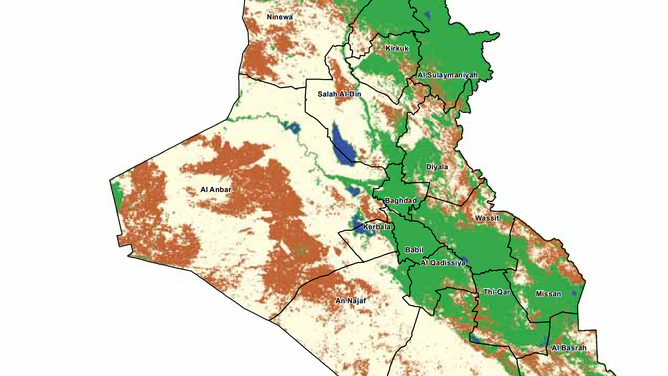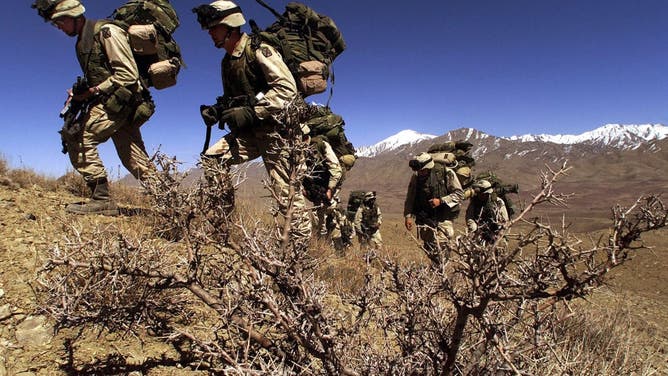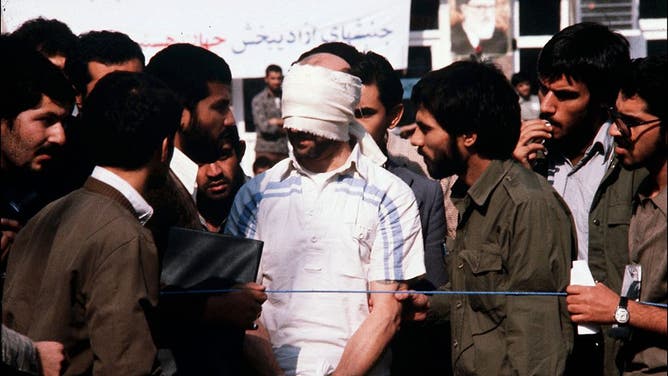Department of Defense: Weather awareness leads to operational advantages on battlefield
The United States has had numerous recent successful operations because of meteorological awareness on battlefield across the Middle East.
7 times the weather influenced the outcome of war
When weather and war interact, it can lead to unexpected and seemingly miraculous events.
Defense officials consider meteorological and oceanographic data crucial to the success of any military operation and point to a series of feats as to the importance of understanding weather's role.
Weather data became a necessity during World War I, and officials have increased their forecasting efforts ever since for both large and small operations.
In a publication prepared under the direction of the Chairman of the Joint Chiefs of Staff, accuracy, consistency, relevancy and timeliness were outlined as the main principles of METOC operations.
Defense officials stated that when principles are adhered to, they aid in the military's planning, execution, and decision-making.
"In military operations, weather is the first step in planning and the final determining factor in execution of any mission," General Carl Spaatz, Air Force Chief of Staff, stated after the conclusion of World War II.
The goal of meteorological operations, as stated by the publication, is to decrease risk and allow commanders opportunities to gain an operational advantage over enemy forces.
In many of the operations, the United States has done just that and emerged victorious, but there have been times when the most powerful military was at the mercy of Mother Nature.
Operation Iraqi Freedom (2003)
A theater where several operations have occurred during the last few decades in the Middle East is in Iraq. The weather is usually warm with little rain, but that does not mean the climate is a breeze for military commanders.
More than 30 percent of Iraq is made up of desert, which aids in near-continuous threat for dust storms.

Sand dunes are shown in brown and areas in green represent vegetation cover.
(United Nations)
The United Nations reports that southern parts of the country are impacted by winds during the spring and early summer, known as the "Sharqi." Gusts around 50 mph frequently produce violent dust storms that make any form of travel dangerous.
The Defense Department publication stated during the planed military's march as part of Operation Iraqi Freedom in 2003 widespread sandstorms were predicted.
As a result, missions were modified, and weapons systems that needed better visibilities weren't used.
U.S. forces successfully maneuvered through blowing sand and reduced visibilities to the surprise of enemy forces.
Operation Inherent Resolve (2015)
Operation Inherent Resolve was the name given to the operation to combat an insurgent group known as ISIL across several locations of the Middle East.
The Defense Department publication states two meteorological and oceanographic members were part of a team that were heavily involved in operation planning.
The information gathered "identified an exploitable window between weather systems" and reportedly allowed commanders to take advantage of cloud cover.
The report stated the successful inclusion of the weather allowed for the operation to successfully drive insurgent forces out of villages.
Operation Enduring Freedom (2001 – 2014)
Operation Enduring Freedom was the official name used by the U.S. government for the Global War on Terrorism.
The Defense Department reported thousands of troops were on the ground in Afghanistan, including meteorological experts.

U.S. Army soldiers from the 4/31 10th Mountain Division hike March 14, 2002 in the rugged Shahi Kot mountains of Afghanistan as they search for caves or Taliban and al Qaeda fighters. Hundreds of American and Canadian troops were lifted into the mountainous region at high altitudes to search for and destroy any enemy they encounter.
(Pool Photo/Getty Images / Getty Images)
The publications states that weather data was important in the mountainous country to properly aim counterrocket systems.
Up-to-the-minute data was needed to successfully defend against a barrage of incoming rocket attacks.
HOW TO FLY THE AMERICAN FLAG WITH RESPECT
Operation Eagle Claw (1980)
One of the few failures cited by defense officials happened during efforts to rescue embassy staff from Iran in April 1980.

IRAN - NOVEMBER 01: Hostage taking at the American Embassy and demonstration in Tehran, Iran in November, 1979.
(Alain MINGAM/Gamma-Rapho via Getty Images / Getty Images)
Like neighboring Iraq, sandstorms in Iran are expected, but these conditions prevented complicated raids in hostile territories.
According to author Paul B. Ryan's book "The Iranian Rescue Mission: Why It Failed" planners and decision makers were never briefed on climate conditions in the planning stages of the operation.
"Pilots were thus unaware of the possibility of encountering suspended dust and unprepared to handle it. Integration of weather information, a vital contributor to mission success, never occurred," Ryan wrote.
The weather and failed rescued operation prevented the U.S. from getting embassy staff out of Iran until a diplomatic resolution was reached during the following year.
